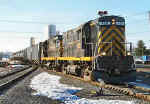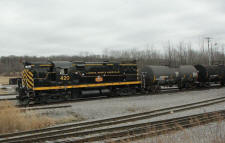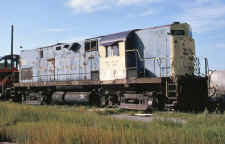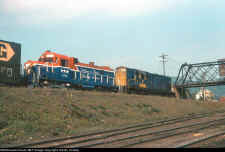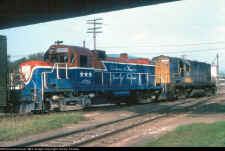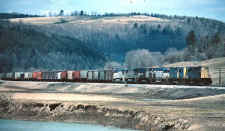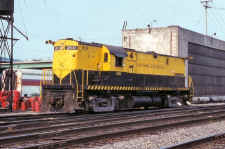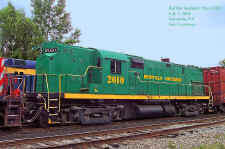| ALCO C-420's #200-229 | |||||||||||||||||||||||||||||||||||||||||||||||
 LIRR #200 C420 Worlds Fair Phase 1 |
 LIRR #229 C420 Phase 2 |
 LIRR #200 MTA Phase 1 |
|||||||||||||||||||||||||||||||||||||||||||||
|
Graphics by: Will
Anderson's Train Art
|
|||||||||||||||||||||||||||||||||||||||||||||||

LIRR C420 #200 promo photo 1963 Archive: Dave Keller
|
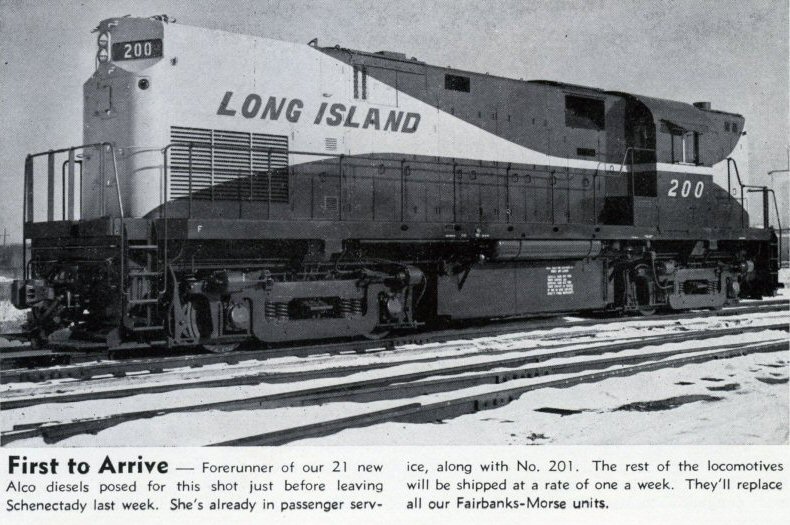 LI Railroader 12/19/1963 'First to Arrive' Archive: Dave Morrison Note: The text indicates already in service, thus the photo below: Wednesday, 12/11/1963.
Qty
|
||||||||||||||||||||||||||||||||||||||||||||||
|
LIRR #222 Farmingdale 08/31/85 |
|||||||||||||||||||||||||||||||||||||||||||||||
|
RAIL TRACTION CORPORATION CHEMICAL BANK NEW YORK
|
|||||||||||||||||||||||||||||||||||||||||||||||
|
'Diesels of the Sunrise Trail'
Author : John Scala page 44. |
|||||||||||||||||||||||||||||||||||||||||||||||
|
ALCO C420 control stand c.1968 (Jay Bendersky-Robert Anderson)
|
|||||||||||||||||||||||||||||||||||||||||||||||
|
The Long Island Rail Road's Workhorse In June of 1963, the American Locomotive Company, better known as ALCO, began to build the Century 420 locomotive in their assembly plant in Schenectady, New York. The C-420, as it was called, was very similar to the layout and designs of predecessor engines, such as the RS-I1, RS-32 and RS-36. However, the C-420 was of the new Century-styled, central air intake design. The long hood seemed noticeably longer when compared to other RS (Road Switcher) engines. This was because the various car body filters were replaced by a centralized air system intake near the cab. This allowed the famous ALCO radiator shutters to be replaced by a smaller fixed air intake at that same spot. These engines were built with 12 cylinder 251c prime movers, and came in two distinct models, with various options. The C-420 was available in both high and low nose short hoods. The reason for the high short hood was to provide space for a steam generator. Both the Long Island and Monon Railroads had the high nose option for steam generators. The Norfolk & Western ordered the high nose hood version as well; however, they were not equipped with a steam generator. Their reasoning was simply for crew safety. Some railroads, such as N&W and Southern, believed the high nose short hood gave the crews a safer buffer in case of a grade crossing accident or other mishap. Orders for low nose C-420's included such railroads as the Union Pacific, Piedmont & Northern, Lehigh & Hudson River and Lehigh Valley. The low nose was used due to the fact that a steam generator was not necessary and would provide better visibility for the entire crew. Of the 129 units that ALCO built, 127 were for domestic railroads. Two were built for Mexico. In 1963, the Long Island Rail Road went shopping for new motive power. The C-420 was the railroad's choice. However, the LIRR decided to lease the engines from ALCO, rather than buy them. These units were numbered 200 -221. When the units arrived on the property, they were painted gray and orange, more commonly referred to as the World's Fair paint scheme. When delivered, engines 200 through 203 had a 900 gallon fuel tank and an 1,100 gallon water tank. The Morris Park shop crews removed and replaced the tanks with 1,000 gallon fuel tanks and 1,900 gallon water tanks. Before 204 or 205 were delivered, the LIRR had ALCO remove the smaller tanks and replace them with the larger tanks. All subsequent engines were built with the larger tanks. It is also interesting to note that engines 210 through 221 were equipped with snow plows on the pilot of the long hood. ALCO denoted the model of these engines as C-420, and was classified as AGP-20msc. What does this mean? AGP stood for ALCO General Purpose unit. The 20 after the dash meant 2,000 horsepower and msc meant it was capable of being MU'd (used in multiple units), and had a steam generator with speed control; hence the classification. The MTA LIRR, however, re-classed them as L-l's in 1968. The L-l's saw service in almost every aspect of LIRR operations. Passenger and freight trains alike were pulled by these engines. From crack passenger trains like The Cannonball, working the Silver Streak to Smithtown, to working the Patchogue to Babylon Scoot, these engines fit the bill. From local freights and road jobs, to switching Kings Park, Central Islip and Pilgrim State Hospitals, the Centuries always seemed to come through. In 1968, the LIRR needed additional motive power. Again, they went back to ALCO and this time purchased eight more C-420's. This order was placed by a different parent company; the MTA. With the LIRR no longer under control of the Pennsylvania Railroad, the Metropolitan Transportation Authority, or MTA, purchased the new engines. The MTA made their presence known when the engines showed up at Morris Park. Instead of the familiar gray and orange livery, the second order arrived in the New York State colors of blue and yellow. Not just regular blue and yellow, but pastel blue and yellow. I remember when I first saw them I hated those colors, but later I grew to like them. Not many people did like the colors, in particular railroad management. Eventually, the colors were subdued and the entire fleet of Alcoís were painted in this newer scheme. Alcoís 222 though 229 were classified as L-2's. These engines had a 79:24 gear ratio, as compared with the 64:19 gear ratio of the L-1ís. The reason the MTA chose a different gear ratio was because the LIRR was hoping to get other freight contracts that were to be exclusively handled by these engines. In particular the LIRR was a contender to haul trainloads of sand from Bridgehampton. The idea never materialized and the L-2's were placed in service throughout the island. The C-420's served the LIRR and its customers well. However, the engineers never seemed to like them. They complained the engines were noisy, dirty, rough riding, had smoke-filled cabs and the long hood would sway back and forth on the rails too much. I think that sounds great to me, everything an ALCO should be. But then I didn't have the honor of running a C-420 for a living. Some people just have all the luck! Copyright 2004 by Rich Gorddard |
|||||||||||||||||||||||||||||||||||||||||||||||
| Alcoís 200 - 221 were classified as L-1's by the MTA in 1968 | |||||||||||||||||||||||||||||||||||||||||||||||
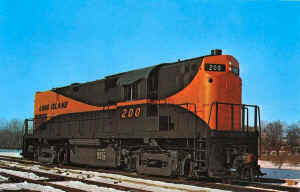
C420 #200 Alco Industries builder photo as delivered 900/1100 fuel/water capacity tanks. |
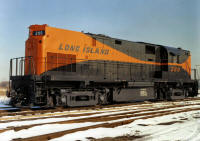 C420 #200 Archive: Dave Morrison |
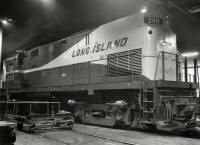 C420 #200 in shop Archive: Dave Morrison |
|
||||||||||||||||||||||||||||||||||||||||||||
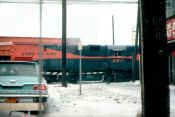
C420 #201 at Hicksville Friday 10:03am westbound 12/27/1963 "Dashing Dan" yet to be applied. Photo/Archive: Art Single |
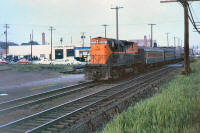 C420 #201 at Mineola (Hoskins-Lynch) |
Here you see the Morris Park Shop modifications on #201 and #202: The larger 1,100 gal. fuel tank, black numbers on a white marker board, and the added smoke deflectors.
|
|||||||||||||||||||||||||||||||||||||||||||||
%20-%2012-71%20(Keller-Keller)_small.jpg) C420 #202 eastbound on Old Town Road trestle east of Setauket - View N 12/1971 Photo/Archive: Dave Keller |
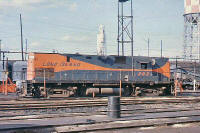 C420 #202 at Morris Park Shops (Hoskins-Lynch) |
||||||||||||||||||||||||||||||||||||||||||||||
|
When delivered, engines 200 through 203 had a 900 gallon fuel tank and an
1,100 gallon water tank. The Morris Park shop crews removed and replaced the
tanks with 1,000 gallon fuel tanks and 1,900 gallon water tanks. Before 204
or 205 were delivered Jan-Feb 1964), the LIRR had ALCO remove the smaller
tanks and replace them with the larger tanks. Research: Rich Goddard |
|||||||||||||||||||||||||||||||||||||||||||||||
|
|

C420 #203 Ronkonkoma |
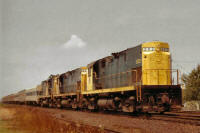 C420 #203 Train #4012 with parlors at Bethpage 8/02/1970 Archive: Mike Boland |
|||||||||||||||||||||||||||||||||||||||||||||
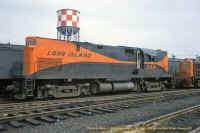 C420 #204 Morris Park Shops 3/14/64 Photo/Archive: Ralph A. Shelhamer |
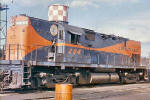
C420 #204 Morris Park (Hoskins-Lynch) |
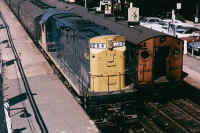 C420 #204 3/1970+ "Purlie" Broadway poster opened 3/15/70 |
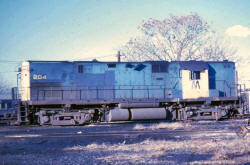 C420 #204 Oyster Bay c.1972 Photo/Archive: Richard Glueck |
||||||||||||||||||||||||||||||||||||||||||||
_small.jpg)
LIRR #205 C420 stenciled larger capacity fuel tank Port Jefferson 6/14/64 (Arnoux-Keller) |
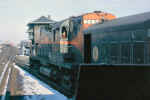
C420 #205 Jamaica (Hoskins-Lynch) |
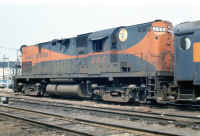 C420 #205 Port Jefferson 4/70 Photo: Jim Parker |
|||||||||||||||||||||||||||||||||||||||||||||

C420 #206 Oyster Bay (Hoskins-Lynch) |
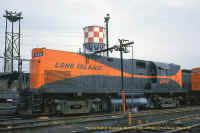 C420 #206 Morris Park Shops 3/14/64 Photo/Archive: Ralph A. Shelhamer |
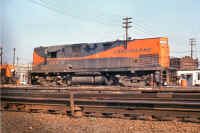 C420 #206 Morris Park Shops 8/1968 Photo/Archive: Jim Parker |
|||||||||||||||||||||||||||||||||||||||||||||
 C420 #207 LI City Collection: Dave Keller |
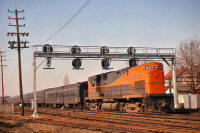 C420 #207 Belmont (Alvino-Morrison) |
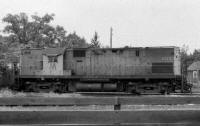 #207 Oyster Bay 1973 Photo/Archive: Richard Glueck |
|||||||||||||||||||||||||||||||||||||||||||||
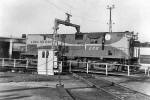 C420 #208 Morris Park Collection: Dave Keller |
|||||||||||||||||||||||||||||||||||||||||||||||
 C420 #209 Mineola |
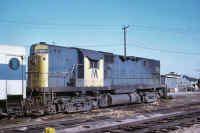 C420 #209 1/1975 Oyster Bay view NE |
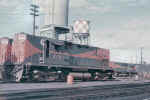 C420 #210 Morris Park |
 C420 #210 Landia 11/01/1970 Photo: John McCluskey |
||||||||||||||||||||||||||||||||||||||||||||
 C420 #211 Builder Photo 4/1964 |
 C420 #211 Brightwaters |
||||||||||||||||||||||||||||||||||||||||||||||
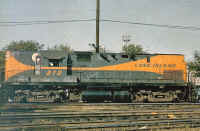 C420 #212 LI City Photo: Steve Hoskins |
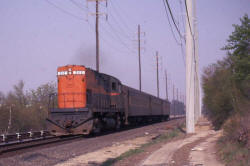 #212 1968 Photo/Archive: Richard Glueck |
||||||||||||||||||||||||||||||||||||||||||||||
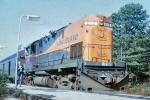 C420 #213 Mastic |
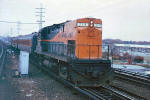 C420 #214 Babylon |
 C420 #214 Riverhead 04/08/1974 |
|||||||||||||||||||||||||||||||||||||||||||||
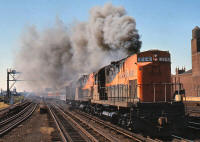 C420 #214 passing Union Hall St. station View W 1969 (Vince Alvino-Dave Morrison) |
%20-%2005-68%20(Keller)_small.jpg) C420 #214 double-heading at Forest Hills View NE 5/1968 Archive: Dave Keller |
||||||||||||||||||||||||||||||||||||||||||||||
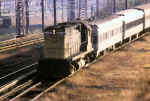 #215 Sunnyside MTA Scheme 10/1974 Photo: Joe Daly |
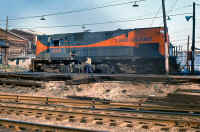 #215 World's Fair scheme Jamaica 8/68 Photo: Jim Parker |
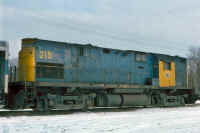 #215 MTA scheme Ronkonkoma 1976 Photo: Unknown |
|||||||||||||||||||||||||||||||||||||||||||||
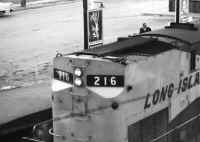 LIRR #216 Close-up of long hood top louvers 01/18/1966 Archive: Dave Keller |
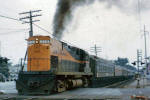 #216 Bay Shore |
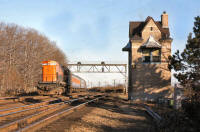 C420 #216 B Tower, Bethpage (Alvino-Morrison) |
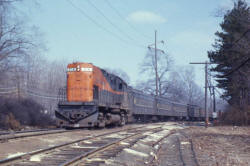 #216 at east end of BK Stony Brook 1971 Photo/Archive: Richard Glueck |
||||||||||||||||||||||||||||||||||||||||||||
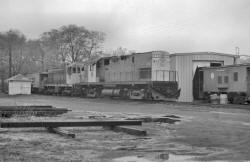 LIRR #216 Ronkonkoma Wye 1972 Photo/Archive: Richard Glueck |
|||||||||||||||||||||||||||||||||||||||||||||||
 C420 #217 Nassau Tower |
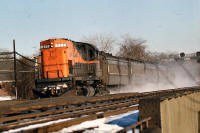 C420 #217 (Alvino-Morrison) |
%20-%2006-66%20%20(Keller)_small.jpg) C420 #217 Parlor train westbound Montauk Branch viaduct - Hillside View SE 6/1966 Archive: Dave Keller |
|||||||||||||||||||||||||||||||||||||||||||||
 C420 #218 Bay Shore |
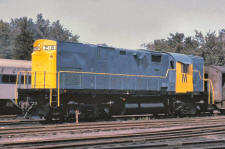 #218 MTA with no road numbers after fresh repaint Oyster Bay 1968 Photo/Archive: Richard Glueck |
||||||||||||||||||||||||||||||||||||||||||||||
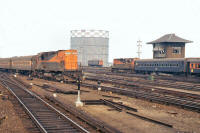 C420 #219 HALL Tower, Jamaica (Alvino-Morrison) |
 C420 #219 Bay Shore |
 C420 #219 Southampton |
 C420 #219 Union Hall Station 02/22/70 Photo: John McCluskey |
||||||||||||||||||||||||||||||||||||||||||||
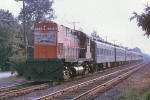 C420 #220 Brightwaters |
|
||||||||||||||||||||||||||||||||||||||||||||||
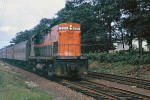 C420 #221 Brightwaters |
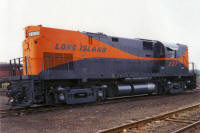 C420 #221 Archive: Dave Morrison
|
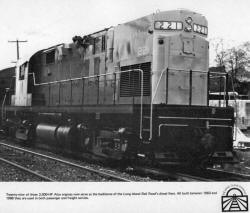 C420 #221 MTA Rails to the Sunrise logo Archive: Dave Morrison |
|
||||||||||||||||||||||||||||||||||||||||||||
| All photos Steve Hoskins, c.1964-65 unless noted. | |||||||||||||||||||||||||||||||||||||||||||||||
|
Alcoís 222 - 229 were classified as L-2's by
the MTA in 1968 Sold to Naporano Iron & Metal of Newark, NJ and scrapped |
|||||||||||||||||||||||||||||||||||||||||||||||
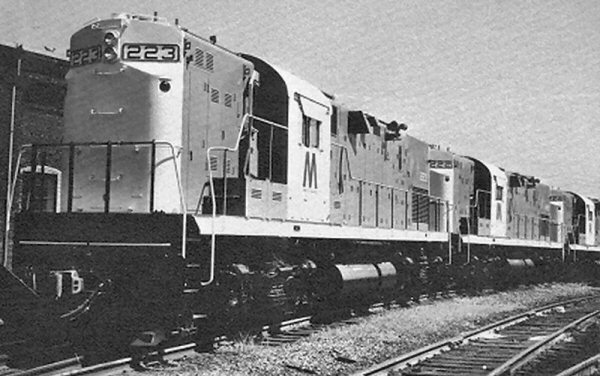 C420 L-2's #223-229 newly delivered 8/1968 Archive: LIRR press photo |
 Graphic by: Will Anderson's Train Art Eight C420s (222-229) were delivered new
by Alco to LIRR in August 1968 and were among the first new equipment
purchased by the LIRR under the auspices of the Metropolitan
Transportation Authority (MTA), a quasi-independent state agency that took
control of the LIRR in 1965. |
||||||||||||||||||||||||||||||||||||||||||||||
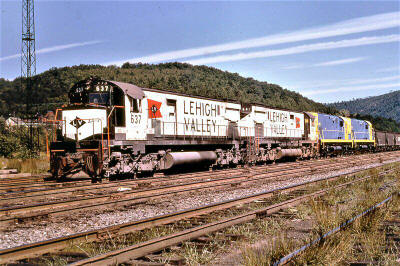 LV "Snowbirds" lashed to MTA color scheme C420s #228-229 at Lehighton, PA for delivery to the LIRR. 8/12/1968 - Photo: Bob Wilt Archive: Guy Fluck |
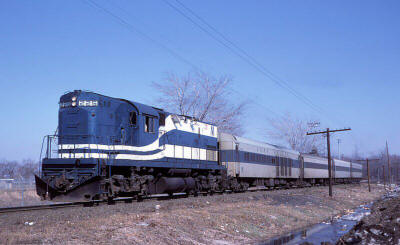 LIRR C420 #255 running cab (short hood) forward has just departed Oyster Bay Station in the winter of 1978. View NE Photo/Archive: Paul De Luca |
||||||||||||||||||||||||||||||||||||||||||||||
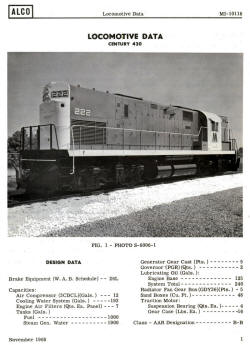 |
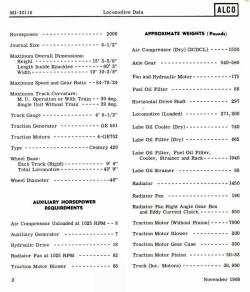 |
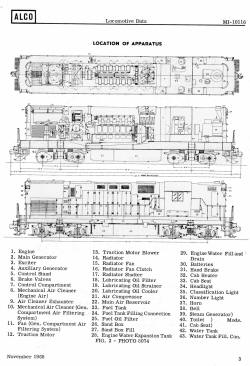 |
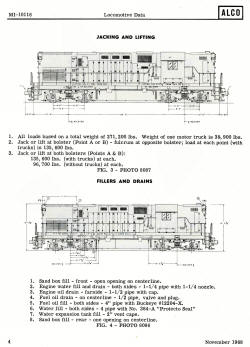 |
||||||||||||||||||||||||||||||||||||||||||||
| Alco Century 420 Locomotive Date Sheets - November 1968 Archive: Dave Morrison | |||||||||||||||||||||||||||||||||||||||||||||||
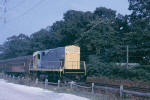 C420 #222 Brightwaters |
 C420 #223 Speonk 08/1986 Photo: Tom Collins |
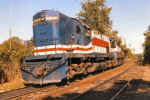 C420 #223 Smithtown |
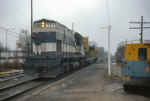 C420 #223 Pine Aire |
||||||||||||||||||||||||||||||||||||||||||||
 C420 #223 Brightwaters |
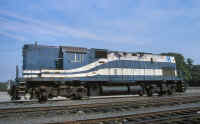 C420 #223 Patchogue 10/1985 |
 C420 #224 Holban |
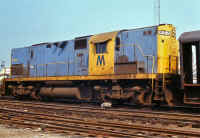 C420 #224 Port Jefferson 4/70 Photo: Jim Parker |
||||||||||||||||||||||||||||||||||||||||||||
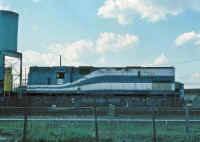 C420 #224 Morris Park 1976
|
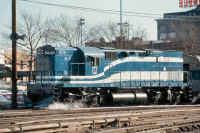 LIRR #224 upper stripe narrow Borden's, LI City Archive: Bob Anderson |
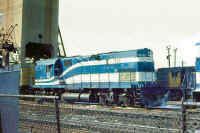 LIRR #224 upper stripe narrow Morris Park c. 2/03/1976 Photo: Tim Darnell |
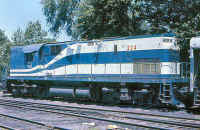 LIRR #224 upper stripe "correct" repaint Photo: Tim Darnell |
||||||||||||||||||||||||||||||||||||||||||||
 C420 #225 LI City |
 C420 #225 Pine Aire |
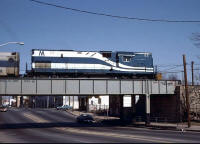 C420 #225 crossing Jericho Turnpike bridge Mineola View W 3/22/1978 Photo/Archive: Paul DeLuca |
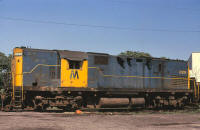 C420 #225 Oyster Bay 8/05/1973 Photo: Henry Maywald |
||||||||||||||||||||||||||||||||||||||||||||
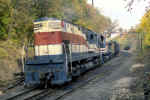 C420 #226 Smithtown |
%20-%2003-76%20(Madden-Keller)_small.jpg) C420 #226 Pilgrim State Hospital Station Brentwood - View W 3/1976 (Madden-Keller) |
 C420 #226 Morris Park |
%20-%2009-71%20(Keller-Keller)_small.jpg) C420 #226 Train #4 eastbound Engineer Becker - Operator Sorensen Orders at PD Patchogue - View NW 9/1971 Photo/Archive: Dave Keller |
||||||||||||||||||||||||||||||||||||||||||||
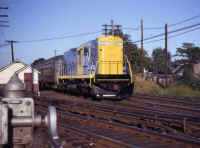 C420 #227 First days in service westbound at Nassau Tower 8/1968+ Photo: Richard Glueck |
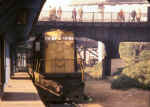 C420 #227 Hunters Point Photo: Joe Daly |
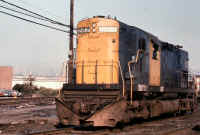 C420 #227 Haberman 1975 |
|||||||||||||||||||||||||||||||||||||||||||||
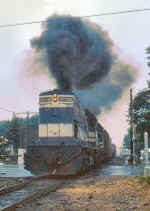 C420 #227 Pinelawn |
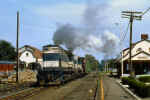 C420 #227 Riverhead |
 C420 #227 LI City |
|||||||||||||||||||||||||||||||||||||||||||||
 C420 #228 E. Williston Photo: Joe Testagrose |
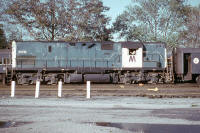 #228 in the short-lived platinum mist/blue scheme Oyster Bay c.1970 Photo/Archive: Richard Glueck |
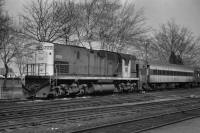 #228 Oyster Bay 1972 Photo/Archive: Richard Glueck |
%20-%201975%20(Keller)_small.jpg) C420 #228 eastbound onto Oyster Bay Branch from NASSAU Tower, Mineola View NE 1975 Archive: Dave Keller |
||||||||||||||||||||||||||||||||||||||||||||
 C420 #228 Oyster Bay 09/03/1978 |
 C420 #228 St. James 1979 Photo: Len Torney |
 C420 #228, #229 Setauket |
|||||||||||||||||||||||||||||||||||||||||||||
 C420 #229 Brightwaters |
 C420 #229 LI City 02/04/1976 |
 C420 #229, MP15AC #155, LIRR C55 King's Park 06/10/1985 |
 C420 #229 Eastport 07/1989 Photo: Tom Collins |
||||||||||||||||||||||||||||||||||||||||||||
|
The Long Island Rail Road's Workhorse by Rich Gorddard - Part 2 |
|||||||||||||||||||||||||||||||||||||||||||||||
|
Editorís note: The following is part 2 of a two part series. We ran part 1 in the last edition of the RPO. Both parts of this story were originally run in the Sep/Oct. and the Nov/Dec. editions of the RPO in 1996. Please note that the whereabouts of the former LIRR C-420ís listed in this article were factual in 1996 but may not be factual today. When the LIRR brought the L-1ís to the island, it spelled the end of the Fairbanks-Morse era on the railroad. What goes around comes around, because in 1976, the LIRR started to take delivery of EMD GP 38-2ís. This was the beginning of the end for the C420ís. In 1977, EMD MP-15ACís and SW -1001ís arrived on the property and that was the final nail in the coffin for the L-1ís. The L-2ís miraculously survived into the late 1980' s. The C420ís as a group wore different paint schemes over the years. From grey and orange, to blue and yellow, to the blue and white wave scheme to match the GP 38ís to the handsome bicentennial wave scheme of the famous LIRR President Francis Gabreski era. I must admit that I had an unhealthy appreciation for these hulking Alcos. There was always something that increased the adrenaline flow when I saw a C420 rumble by. The earth trembled, black smoke belched forth, it was something I will always remember. On a quiet night, I could hear the C420ís idling in the Ronkonkoma yards. Even the sound of an Alco 251 engine, was like music to my ears. I was so attached to these engines, I could tell the difference in the sound of these engines from the rest of the fleet. As the lease on the L-1's were about to expire, the LIRR felt that to continue to lease the engines was too costly a proposition, so they were removed from the property, and replaced by a fleet of aging GP-7ís and 9ís, from Precision National and Bangor & Aroostook Railroad. In September of 1989, I was lucky enough to ride, photograph and video the last trip in passenger service of the C420ís. The Morris Park forces had the 225 and 229 looking great for the fan trip that day. The highlight of the trip came at the Clinton Avenue grade crossing for a final photo run by. The engineer was given the OK and he loaded the engines up to send plumes of glorious Alco smoke into the sky. They are all gone now, just a memory. Besides working on Long Island, the engines did, but briefly leave the island. In 1964, units 207 and 208 were loaned briefly to the New Haven Railroad. The Delaware & Hudson leased many different C420ís over the years. The 223 was leased to Metro-North for work train service. Metro-North even thought about acquiring the L-2 fleet, but the units were too high to work the tunnels of Park Avenue. You may ask whatever happened to the C420ís. Some survived the scrapper's torch and are still in operation, one in New York State. When the lease on the Alcos expired, 200-209 were shipped to the Delaware and Hudsonís Colonie Shops. Number 208 was sent to Morrison-Knudsen in Boise, Idaho. Numbers 210-221 went to the Morristown & Erie. Soon afterward the final fate was sealed and the engines were sold off all over North America. 200 was sent to Delaware and now operates on the Livonia, Avon & Lakeville RR. 201 & 202 were Sold to M-K and used on the Vermont Northern RR. 203, 205 & 207 went to Trans Action Lines and were used on the Erie-Western RR (205: 09/26/77 first run). 204, 210 & 221 were sold to DMV, and leased to Virginia & Maryland. 206, 210-216, 218 & 219 were sold to the Roberval & Saguenay RR in Canada. 208 was sold to M-K then later used on the Detroit & Mackinac. 217 & 220 were sold to Naporano Iron & Metal in Newark, New Jersey. The L2ís lasted until the late 1980ís. As I mentioned before, 225 and 229 ran a fan trip in 1989. After that trip, the L2ís were seen in work train service, most notably on the Port Jefferson branch. Shortly after that, one of the engines developed severe trouble with either the trucks, wheels or traction motors, and the decision was not to incur the expense of repairing the problem. Also, Alco parts were getting very hard to come by. I have been told that 222-229 were all sold to Naporano Iron & Metal of Newark New Jersey. Naporano resold the engines to a South American country. The units which went to the Roberval & Saguenay RR in Quebec are all still in operation. Several of them have had their high short hoods chopped down, others have not received this disfigurement. Hopefully they will not. Hi-Ball productions of New Hampshire has a video on the Roberval & Saguenay, and I recommend this tape if you would like to see these ex-LIRR units in action. The Arkansas & Missouri run almost exclusively C420ís. None to my knowledge are of LIRR heritage. The Livonia, Avon & Lakeville RR in upstate New York is running ex-LIRR #200. The policy of LA&L is to number the engine according to the model. Hence, it has been renumbered 420. They also have a C425, and its number is, you guessed it...425. Ex-LIRR 221 eventually made it from the Virginia & Maryland to the New York, Susquehanna & Western. The NYS&W renumbered her 2002 and 230. Rumor has it this engine is somewhere in or around Buffalo, and is owned by a private owner. {Editor's Note: As of press time, it has been learned this locomotive has been purchased by Buffalo Southern #2010} After retirement on the LIRR, the C420's saw service on the railroads named above. However, some units went on to live even fuller lives. The 201, 204, 217 and 220 worked on the Mexican Railway system. The 207 went from the Erie Western to become 101 on the Little Rock & Western. The 201,202 and 204 were used by Morrison-Knudsen on the Vermont Northern. Number 202 was later resold to P. V. Commodity Ltd. in Calgary, Canada. The 207 worked the Green Bay yards on the Green Bay & Western. In 1976, a new person in charge of the fleet came from the Milwaukee Road, which sported an all-EMD fleet. Besides at this time ALCO had ceased to exist since 1969. LIRR/MTA management switched to GP 38-2ís, MP-15ACís, and SW-1001ís as the ALCO fleet was aging. The 252 was the only GP 38-2 to be delivered in bicentennial colors, and was almost exactly the same as the bicentennial engines of the Milwaukee Road. |
|||||||||||||||||||||||||||||||||||||||||||||||
| ALCO C420 Plows | |||||||||||||||||||||||||||||||||||||||||||||||
|
C420 L-1 #200-209 delivered without plows. Info: Richard Glueck C420 L-1 #210-221 and L-2 #222-229 equipped with plows as delivered by ALCO. Info: "Diesels of the Sunrise Trail" by John Scala With the exception of #226 they
appeared to be permanent and never removed. #226 has numerous
photos in the MTA delivered scheme, red strip scheme, and the
blue/white wave with and without the plow. Research: Al Castelli
|
|||||||||||||||||||||||||||||||||||||||||||||||
| ALCO Plows in Snow Usage | |||||||||||||||||||||||||||||||||||||||||||||||
|
Question: Why plows on RS-3's and not heavier
C420's? Answer #2: Greenport trains of 1 or 2 cars usually drew an RS3, not a 420. Greenport trip had many places with deep snow piles (cuts). So, why not put a plow on a few RS3s to protect the Main Line service which didn't see 420s much?? Question: When you ran on LI, in the winter snows, did it make much difference whether you had an engine equipped with a plow, or not?" Answer: "Never had much thought on plow on loco's. Basically same as you about grade crossings. I did run many MU's on snow patrol to keep third rail clear. One most remembered is West Hempstead Branch. After making about seven round trips from WH to Valley Stream (4.7 miles) if sleet or snow was forecast you had to pick a 12 car train in yard and make three more trips until morning trains ran. This was manual block track so you had to get running orders as an extra train for this plus flag about three grade crossings as watchmen were done after last ran. Patrol trains were ran in third rail areas also." Info: Mark Smith We have a plow on one end of one GP9, and one end of one GE center cab 44-tonner. But we keep the RR open by running patrol trains when it snows, so really don't count on the plows for much beyond clearing the berms piled up by the hi-way plows at crossings. SO not much reliance on plows for the most part, apparently; except at grade crossings to ease the crunch going over to the other side. Patrol trains take care of removing the snow while it's still powdery or at least not yet set up into one solid block of ice. Not much has changed in 50 years! Info: Art Single |
|||||||||||||||||||||||||||||||||||||||||||||||
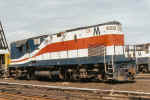 LIRR #226 Morris Park red/white/blue no plow |
 LIRR #226 Farmingdale view N with plow 9/14/86 |
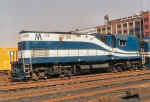 LIRR #226 LI City wave scheme no plow |
|||||||||||||||||||||||||||||||||||||||||||||
| LIRR C420's Status | |||||||||||||||||||||||||||||||||||||||||||||||
|
In early 1976 through 1977, the Delaware and Hudson found
itself with an ever increasing need for extra motive power. This was
due to the newly aquired trackage rights that was brought on by the
formation of Conrail. Units ex-LIRR #200-221 owned by Rail Traction Corp and on lease to D&H 1976-1977.
A number of units later sold and were not sequentially re-numbered into the R&S roster
as follows: |
|||||||||||||||||||||||||||||||||||||||||||||||
|
200
is now (LA&L) Livonia, Avon & Lakeville #420, Lakeville, NY,
operational in service 1995
|
|||||||||||||||||||||||||||||||||||||||||||||||
 D&H
ex-LIRR #201 Photo: Bill Weibel D&H
ex-LIRR #201 Photo: Bill Weibel |
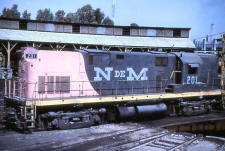 NdeM, Mexico ex-LIRR- #201 - eBay
NdeM, Mexico ex-LIRR- #201 - eBay |
||||||||||||||||||||||||||||||||||||||||||||||
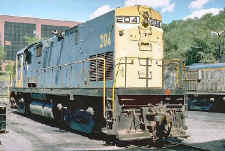 D&H
ex-LIRR #204 Colonie, NY
7/25/1976 Photo/Archive: Ed McKernan D&H
ex-LIRR #204 Colonie, NY
7/25/1976 Photo/Archive: Ed McKernan |
|||||||||||||||||||||||||||||||||||||||||||||||
204, 220 in Mexico, going to museum,
scrapped 204 parts to go for 220
08/2008 Photo: Otto Vondrak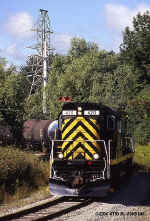
|
|||||||||||||||||||||||||||||||||||||||||||||||
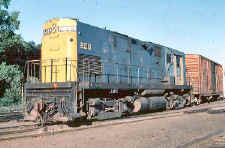 D&H
ex-LIRR #206 Mechanicville,
NY 7/25/1976 Photo/Archive: Ed McKernan D&H
ex-LIRR #206 Mechanicville,
NY 7/25/1976 Photo/Archive: Ed McKernan
|
|||||||||||||||||||||||||||||||||||||||||||||||
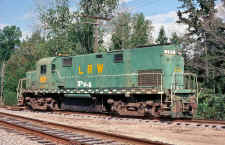 207 Erie Western #207, Green Bay & Western, Little Rock & Western
#101 (LR&W), Little Rock, AK. Chop nose, scrapped, used for parts.
1989 Photo: William S. Smith, Sr.
C420 #207 LR&W #101 is scrapped, used for parts. 207 Erie Western #207, Green Bay & Western, Little Rock & Western
#101 (LR&W), Little Rock, AK. Chop nose, scrapped, used for parts.
1989 Photo: William S. Smith, Sr.
C420 #207 LR&W #101 is scrapped, used for parts.
|
|||||||||||||||||||||||||||||||||||||||||||||||
| 208 Lake States #976 chop nose, had major fire recently and will be scrapped. 208 was supposedly scrapped. Info from Nicholas Todd. C420 #208 Lake State #976 has been parted out and scrapped. | |||||||||||||||||||||||||||||||||||||||||||||||
| 210 Went to the Virginia & Maryland RR with 221, 210 sunk on a carfloat & was scrapped. Info: Tim Darnell | |||||||||||||||||||||||||||||||||||||||||||||||
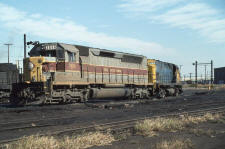 LIRR
#211 at Meadows Yard, South Kearny, NJ. Pulaski Skyway, view S, in
background 10/1976 Photo: eBay LIRR
#211 at Meadows Yard, South Kearny, NJ. Pulaski Skyway, view S, in
background 10/1976 Photo: eBayThe lease on C420 #211 ended on 9/14/1976 per John Scala's "Diesels of the Sunrise Trail". It was then leased briefly to McCormack Sand & Gravel in S. Amboy, NJ. Later leased to the Roberval & Saquenay as their #41 between 3/1977 and 5/1978. As this was shot in October, 1976, it was off Long Island and
probably in transit to McCormack Sand & Gravel. Dave Keller |
|||||||||||||||||||||||||||||||||||||||||||||||
 ex-LIRR
#211 with M&E (Morristown & Erie RR) cab stencil at D&H, Oneonta, NY
4/26/1977 Photo/Archive: Charles Maxim ex-LIRR
#211 with M&E (Morristown & Erie RR) cab stencil at D&H, Oneonta, NY
4/26/1977 Photo/Archive: Charles Maxim |
|||||||||||||||||||||||||||||||||||||||||||||||
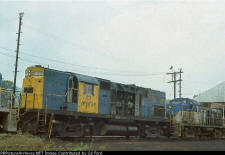 ex-LIRR
#211 with cab stencil M&E RR at Whitehall, NY 8/1977 Archive: Gil Ford ex-LIRR
#211 with cab stencil M&E RR at Whitehall, NY 8/1977 Archive: Gil Ford |
|||||||||||||||||||||||||||||||||||||||||||||||
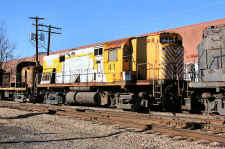 ex-LIRR
#211 VLIX #41 at Delaware Lackawanna shops, Scranton, PA. It may have been heavily vandalized, now owned by Delaware
Lackawanna. ex-LIRR
#211 VLIX #41 at Delaware Lackawanna shops, Scranton, PA. It may have been heavily vandalized, now owned by Delaware
Lackawanna. Paul Strubeck 7/2008 Delaware Lackawanna #41 at Scranton, PA shops as part of Genesee Valley Transportation Company (GVT Rail) 11/12/2016 Photo/Archive: Tim Darnell
|
|||||||||||||||||||||||||||||||||||||||||||||||
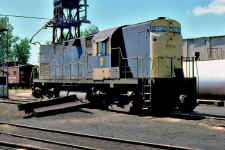 D&H
ex-LIRR #212 - Whitehall, NY Photo: James C. Smith, Jr. D&H
ex-LIRR #212 - Whitehall, NY Photo: James C. Smith, Jr.
|
|||||||||||||||||||||||||||||||||||||||||||||||
|
|
|||||||||||||||||||||||||||||||||||||||||||||||
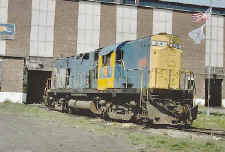 D&H
ex-LIRR #214 Colonie,
NY 5/21/1977 D&H
ex-LIRR #214 Colonie,
NY 5/21/1977 Photo/Archive: Ed McKernan |
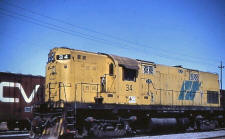 Roberval
& Saugernay Railroad #34, ex-LIRR #214 Roberval
& Saugernay Railroad #34, ex-LIRR #214 Photo: eBay |
||||||||||||||||||||||||||||||||||||||||||||||
|
|
|||||||||||||||||||||||||||||||||||||||||||||||
|
|
|||||||||||||||||||||||||||||||||||||||||||||||
|
|
|||||||||||||||||||||||||||||||||||||||||||||||
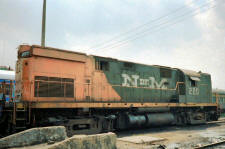 NdeM,
Mexico City - Ex-LIRR C420 #220 1/01/1967 Photo: Toshihiko Yamada NdeM,
Mexico City - Ex-LIRR C420 #220 1/01/1967 Photo: Toshihiko Yamada |
|||||||||||||||||||||||||||||||||||||||||||||||
 NdeM,
Mexico City - Ex-LIRR C420 #220 being relocated to the new YucatŠn
Museum 3/2023 Photo: DeAndre Walthers NdeM,
Mexico City - Ex-LIRR C420 #220 being relocated to the new YucatŠn
Museum 3/2023 Photo: DeAndre Walthers |
|||||||||||||||||||||||||||||||||||||||||||||||
| The 222-229 were to be sold through Naporano in 1989, which bid the highest price, to a company in Suriname. There was only one company that I was aware of that had rails there: A bauxite firm which bought two SP RSD12s from Chrome Crankshaft ca. 1980. Supposedly this operation never got off, but the tracks still exist. I doubt the ALCOs exist, but one never knows. Info from Tim Darnell | |||||||||||||||||||||||||||||||||||||||||||||||
| 201 and 217 were scrapped Mexico. I've received sad news about ex-LIRR C-420 #204, it was cut up in July 2004 in Mexico. The good news is parts were taken to restore C-420 #220 and ex-D&H C-628 610. Apparently radiators were replaced with those from C-424s or M-424s by FNM or possibly MLW. #220- Supposedly preserved in Mexico, possibly at the 220 is at the Meridia (MX) museum | |||||||||||||||||||||||||||||||||||||||||||||||
| C420 #221, the last of the first batch of C420s was withdrawn from service in October, 1977. Info from Tim Darnell | |||||||||||||||||||||||||||||||||||||||||||||||
|
|
|||||||||||||||||||||||||||||||||||||||||||||||
|
|
|||||||||||||||||||||||||||||||||||||||||||||||
|
C420 #222, the first of the second batch of C420s was withdrawn from
service 1/21/88. |
|||||||||||||||||||||||||||||||||||||||||||||||
|
200 is now (LA&L) Livonia, Avon & Lakeville #420,
Lakeville, NY, operational in service 2019 Photo: Lakeville Yard Bulk
Transfer Facility Info: Tim Darnell |
|||||||||||||||||||||||||||||||||||||||||||||||
.jpg)
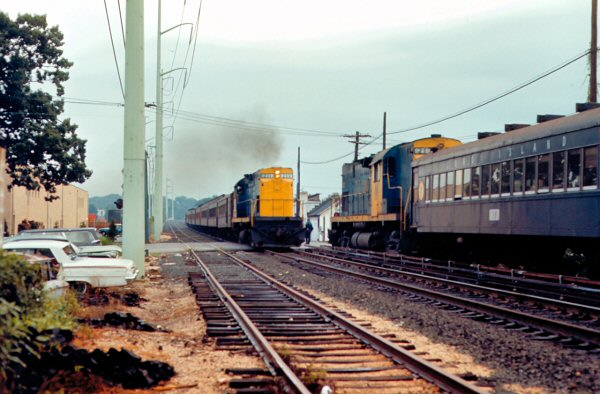

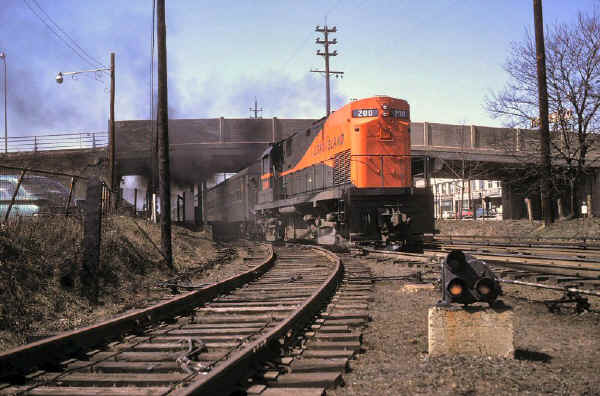
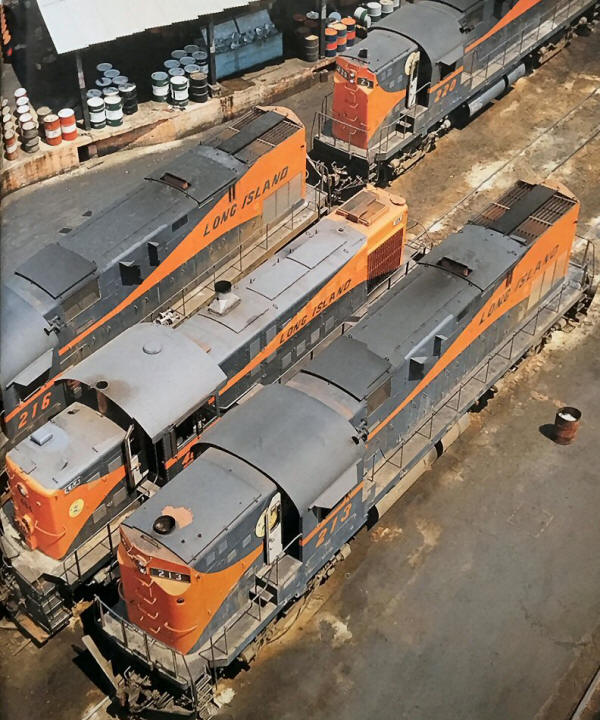
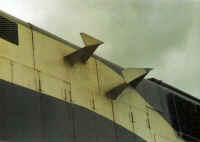
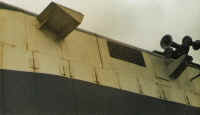
.jpg) LIRR C420 #200 Chemical Bank Trust Stencil on
the fuel tank (as delivered),
LIRR C420 #200 Chemical Bank Trust Stencil on
the fuel tank (as delivered), 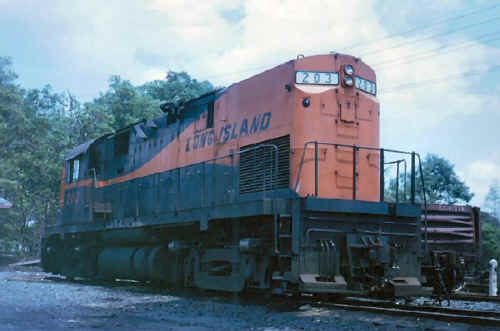
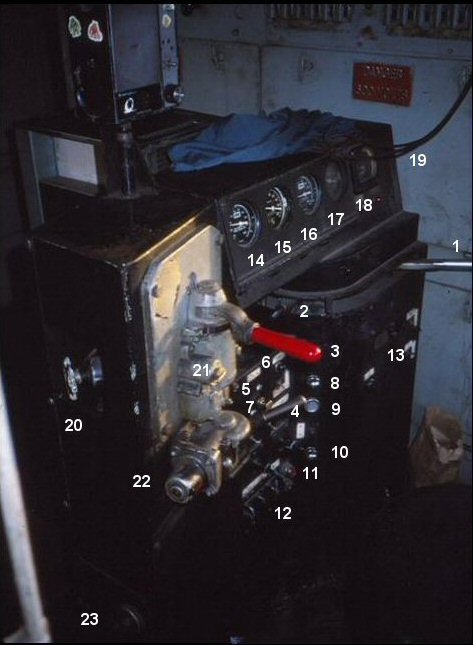 1)
Throttle-idle position
1)
Throttle-idle position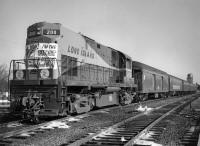
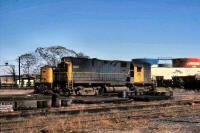
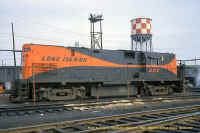

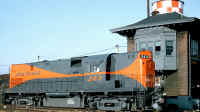
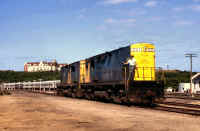
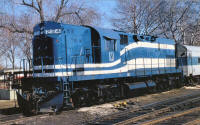

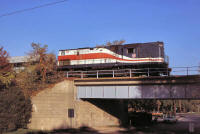
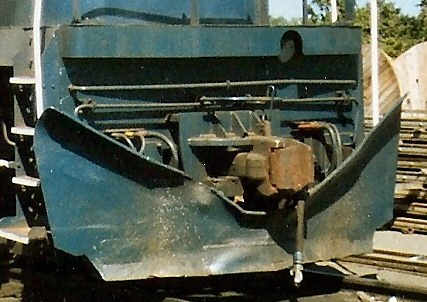 The
question arises as to the C420 plows, as delivered or added later,
and the provider: ALCO, OEM after market, or built by the LIRR
Morris Shops:
The
question arises as to the C420 plows, as delivered or added later,
and the provider: ALCO, OEM after market, or built by the LIRR
Morris Shops: